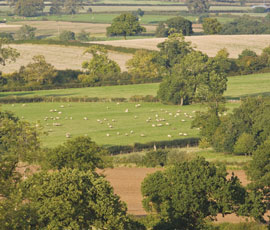Know the risk of adverse posession

Adverse possession is an issue of which all land owners and managers need to be aware. Richard Gadd of Andrew Granger & Co explains how it can affect the rural community.
At its simplest, adverse possession is the act of acquiring legal title in land through continuous and uninterrupted occupation after a specified period of time.
Claims of adverse possession can often arise where land has been let but hasn’t been physically inspected for some time. Any claims must be made to the Land Registry with proof of possession.
Such claims often incur considerable legal fees, time and distress for both the squatter (the individual undertaking adverse possession) and the registered proprietor (landowner).
Commonly involving modest parcels of garden land or disregarded agricultural land, claims often arise from homeowners “extending” their garden into adjacent fields.
This encroachment often occurs when the landowner or tenant erects a new fence line a few metres into the field and the homeowner gradually extends out to this new fence line.
Making and proving a claim
A squatter can only apply for registration (under the Land Registration Act 2002) after having been in adverse possession for the requisite time (usually 10 or 12 years). The period of adverse possession is taken to have commenced when either the registered proprietor has been dispossessed or has discontinued possession of the land in question; of if the squatter has gone into “adverse possession”.
The act of adverse possession must be proven by the squatter. They are required to prove factual possession, accompanied by proof that the squatter did so with the intention to possess.
Quite simply, this refers to the squatter having taken “control” of the land, for example, by enclosing the land with a fence and managing the land as if it were their own. Once this has been proven, a claim can be lodged after the required 10 or 12 year period.
However, it is important to remember that no claim can be made by a squatter on land they legally hold under a lease or licence. Claims on unregistered land must be accompanied by proof of 12 years’ factual possession, with registered land requiring only 10 years.
It is also worth noting that the above periods do not necessarily have to have been undertaken by one single squatter. A squatter could theoretically pass on their interest in the land to another, but this would require immediate continuation of factual possession.
The process
When a claim for adverse possession is made, the Land Registry informs all owners of the land (if registered) who then have 65 business days to object to the registration.
Where land is unregistered, the Land Registry will require land charges, search certificates and details of the owner and previous owners if they can be identified.
If, upon inspection and consideration, the Land Registry feels there has been adverse possession for the requisite period of time, it will serve notice on the registered owner or any person with an interest in the land.
Individuals receiving such notices can object, stating the grounds for the objection in writing. If an objection is received, the application may not be decided upon until the objection is dealt with.
Registered owners of land need to do as much as they are able to guard against such claims. Being aware of the following can help:
• Ensure land is registered at the earliest opportunity and that address and contact details are up to date.
• Physically check and inspect land holdings and compare boundaries with any deeds/title documents you or your solicitor hold.
• Ensure boundary features such as fences, walls, hedges and so on are in line with title plans/deed documents and that neighbours’ fences/ walls have not encroached over time. In many cases, the physical fence line of a field or large garden will not necessarily be the legal title boundary.
• If you suspect a neighbour has encroached onto your land, seek professional advice immediately.
• On larger estates and where parcels of land are let out on long term leases/tenancies it is good practice to record all boundary positions (with photographic evidence) and revisit these boundaries every 12-24 months.
It is also important to note that tenants on agricultural tenancies may be in breach of their tenancy terms if they know of or allow any action to take place which may give rise to a claim of adverse possession.
As with any complex legal issue, if problems do arise, consult your solicitor, land agent or rural surveyor.
Richard Gadd is a chartered surveyor and RICS registered valuer in the rural department at East Midlands based surveyor and land agent Andrew Granger & Co. (www.andrewgranger.co.uk)
Tips on sellling land for development
